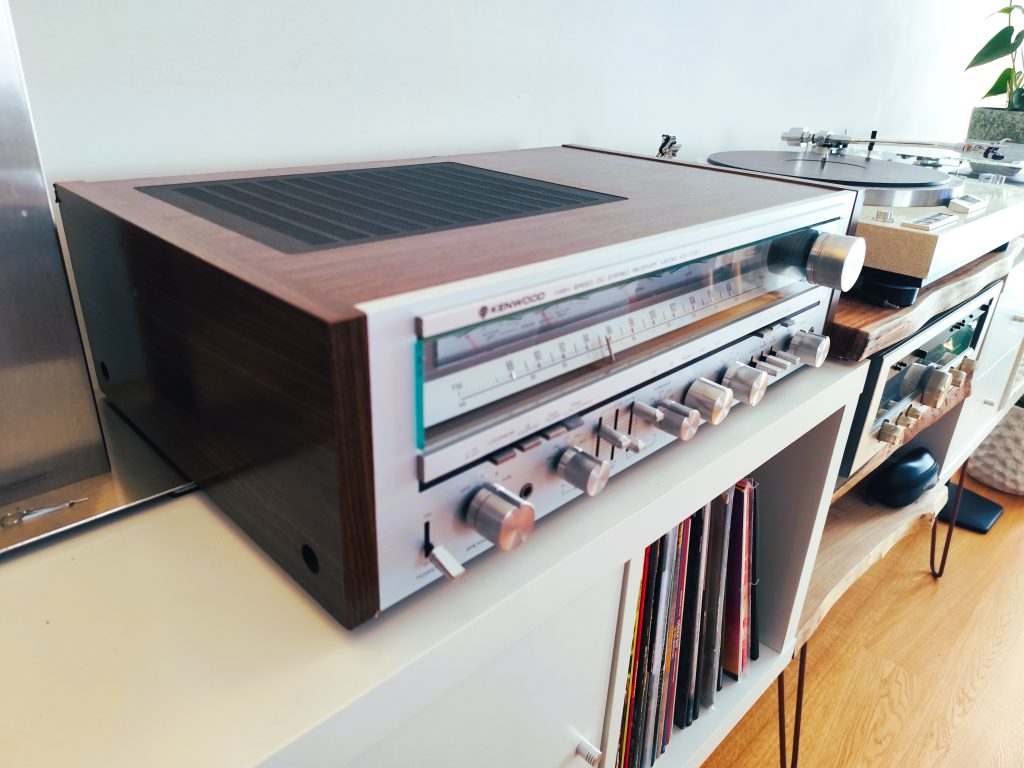This is the Kenwood KR-7050 High Speed DC Stereo Receiver from 1979–1980 — a true powerhouse from the golden age of solid-state audio. It’s big, beautiful, and delivers a bold, dynamic sound that’s unmistakably vintage Kenwood.
Physically, the KR-7050 stands out with its brushed aluminum faceplate, soft blue and amber lighting, and four illuminated analog meters — a real treat for both the eyes and ears. It was built during a time when receivers were over-engineered for reliability and performance, and the KR-7050 is no exception.
This model was part of Kenwood’s “High-Speed DC” line, which focused on fast signal response and accurate reproduction. The amplifier section is fully DC-coupled, meaning there are no capacitors in the signal path from input to output, ensuring an ultra-flat frequency response down to 0 Hz. This results in precise bass, clean mids, and crystal-clear highs with excellent phase accuracy.
Its high slew rate of 200 V/μs and rise time of 0.9 μs reflect the lightning-fast transient response — ideal for high-fidelity playback with excellent detail and attack, particularly in percussion and string instruments.
The phono stage features a sophisticated FET-based equalizer with a single-ended push-pull output, designed for low distortion and a high signal-to-noise ratio, making it a perfect match for quality turntables and cartridges.
On the tuner side, it boasts wide/narrow IF selection and five ceramic filters, which help improve selectivity and reduce adjacent channel interference — especially useful in crowded FM areas. It also includes antenna strength and FM center tuning meters, allowing for precise station alignment.
For tonal shaping, you get independent bass, midrange, and treble controls, with switchable turnover points for bass and treble — a rare and welcome feature that gives you more control over your sound.
With a warm, rich and full-bodied character, the KR-7050 doesn’t just play music — it makes you feel it. It has more than enough clean power to drive demanding speakers with authority, while maintaining control and musicality at all volumes.
An outstanding vintage receiver — rare, well-built, great sounding, and a pleasure to use. A true classic.
I've had two of these, the first in 2024:
The second in 2025:
Power output: 80 watts per channel into 8Ω (stereo)
Frequency response: 20Hz to 20kHz
Total harmonic distortion: 0.02%
Damping factor: 100
Input sensitivity: 3.6mV (mic), 2.5mV (MM), 200mV (DIN), 200mV (line)
Signal to noise ratio: 72dB (mic), 85dB (MM), 108dB (DIN), 108dB (line)
Output: 200mV (line), 30mV (DIN)
Dimensions: 546 x 172 x 411mm
Weight: 15kg
Year: 1979
































